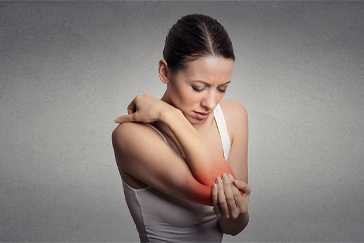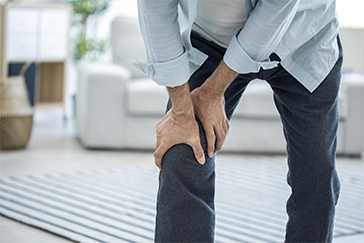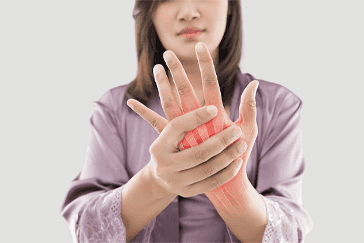
Expert Physiotherapy at Home
Certified physiotherapists visit you at home to provide focused, one-on-one care tailored to your needs. With no travel or waiting rooms, recovery happens in a setting that is comfortable, familiar, and built around your convenience.
Personalised Recovery Programmes
Every treatment plan is designed to suit your condition, goals, and pace. Our physiotherapists follow structured, evolving protocols to ensure consistent progress, with each session aligned to deliver meaningful results.
Trusted Physiotherapists. Real Results.
Our team comprises experienced, background-verified physiotherapists trusted by thousands of families. With a strong focus on safety, reliability, and clinical outcomes, we make recovery at home both effective and reassuring
Patient Testimonials
Portea Physiotherapists for Home Visits
Meet some of our experienced and dedicated healthcare professionals

Dr. Lokesh G
Physiotherapist
Specializations
Experienced in Neurological rehabilitation, Orthopaedic physiotherapy, and Paediatric care
Delivers structured, high-impact treatment plans across neuro, ortho, and paediatrics—ensuring safety, comfort, and measurable recovery at every stage.

Dr. Mohammed Sarwar
Physiotherapist
Specializations
Experienced in Neurological rehabilitation, Adult physiotherapy, and Paediatric care
Combines deep clinical expertise with a compassionate approach, supporting both adults and children through neuro and physical rehabilitation that promotes long-term independence and recovery.

Dr. Nelapati Divya
Physiotherapist
Specializations
Skilled in Orthopaedic rehabilitation, Manual therapy techniques, and Paediatric physiotherapy
Brings a personalised, hands-on approach to healing—combining structural expertise with paediatric sensitivity to restore movement, relieve pain, and improve everyday function.

Dr. Naveen V
Physiotherapist
Specializations
Trained in Pain management, Cardiac and Orthopaedic rehabilitation, Neurological care, and Neural tissue mobilisation
Brings clinical precision and empathy together—designing science-backed recovery protocols for pain relief, nerve mobilisation, and cardio-neuro-ortho rehabilitation across all age groups

Dr. Miloni Savla
Physiotherapist
Specializations
Holds an MPT in Orthopaedics with a focus on Musculoskeletal rehabilitation and strength recovery
Delivers focused, movement-oriented therapy grounded in orthopaedic science—helping patients rebuild strength, restore function, and return to daily life with confidence
Other Cities
Physiotherapy Treatments

what is ankylosing spondylitis?
Ankylosing spondylitis is a rare form of arthritis that occurs more frequently in men than women. It is an inflammatory disease that causes pain and inflammation between the vertebrae. Over time, it can lead to new bone growth between the vertebrae, resulting in the fusion of the vertebrae and a rigid, immobile spine. In some cases, ankylosing spondylitis may also impact the eyes, heart, lungs, and kidneys.
what are ankylosing spondylitis symptoms:
The primary symptoms of ankylosing spondylitis include dull pain and stiffness, especially noticeable in the morning or after periods of rest. As the condition progresses, symptoms may intensify. Common symptoms include:
- Dull Pain and Stiffness: Prominent in the morning or after rest.
- Neck Pain and Fatigue: Discomfort in the neck along with general tiredness.
- Reduced Spine Mobility: Difficulty moving due to spinal stiffness.
- Limited Chest Expansion: Restriction in breathing due to reduced chest movement.
- Unintended Weight Loss: Often caused by chronic inflammation.
- Fever: A systemic response to inflammation.
- Pain in the Buttocks and Thigh: Discomfort extending beyond the spine.
- Arthritis in the Hips: Joint involvement leading to additional pain and mobility issues.
These Might be of Interest
ankylosing spondylitis causes:
The exact ankylosing spondylitis cause is yet to be ascertained, although a genetic link has been found and most people affected with ankylosing spondylitis have been found with HLA – B27 gene but, not all. Some of the risk factors associated with ankylosing spondylitis cause are;
- Sex – Men are more susceptible to the disease than women
- Age – Ankylosing spondylitis mostly affects people in late adolescence and early adulthood.
- Genetics – People having HLA B27 gene are more susceptible to ankylosing spondylitis than others.
ankylosing spondylitis diagnosis
Ankylosing spondylitis, a type of spinal arthritis, is mainly diagnosed through radiological evaluations, as no single test can definitively diagnose it. Key diagnostic methods include:
- MRI Scans: Provide detailed images of bones and soft tissues, helping to detect early inflammation and structural changes in the spine and sacroiliac joints that may not be visible on X-rays.
- X-Rays: Used to identify advanced changes such as fusion or erosion in the spine and sacroiliac joints, which indicate ankylosing spondylitis.
- Blood Tests: Measure elevated levels of C-reactive protein (CRP) and erythrocyte sedimentation rate (ESR), markers of inflammation in the body.
- Genetic Testing: Checks for the HLA-B27 gene, commonly found in individuals with ankylosing spondylitis, although its presence does not confirm the disease, nor does its absence rule it out.
- Schober’s Test: A physical exam to assess lumbar spine flexibility, which may be reduced in ankylosing spondylitis.
ankylosing spondylitis treatment
There is no cure for ankylosing spondylitis, similar to other forms of arthritis. However, treatment can effectively manage symptoms, reduce pain, and slow disease progression. Early detection and timely treatment are crucial for improving quality of life. Treatment options for ankylosing spondylitis include:
- Medications: Commonly used medications include non-steroidal anti-inflammatory drugs (NSAIDs), opioid painkillers, disease-modifying anti-rheumatic drugs (DMARDs), and analgesics.
- Surgery: In severe cases, surgery may be necessary to address significant flexion deformities and improve function.
- Physical Therapy: Physiotherapy plays a key role in managing ankylosing spondylitis. It is often combined with other treatments to enhance symptom management, reduce pain, and prevent disease progression. Physical therapy focuses on strengthening core muscles and the spine, increasing spinal mobility, and includes specially designed exercises. Regular practice of these exercises is essential for maximizing the benefits of physiotherapy.
ankylosing spondylitis home treatment:
The varied ankylosing spondylitis remedies offered in ankle spondylitis treatment at home are;
- Regular practice of ankylosing spondylitis exercises as demonstrated by a physiotherapist and yoga
- Maintaining good posture while sitting, standing or sleeping
- Warm baths with Epsom salts would relax the muscles and provide ankylosing spondylitis relief
- Massage can prove comforting and would relief the stress
ankylosing spondylitis prognosis
Ankylosing spondylitis is a complex condition with unclear symptoms and causes. Its prognosis is also difficult to predict, as symptoms and pain can fluctuate over time.
Pain severity varies among individuals. Some people may experience minimal mobility issues and see the disease stabilize, while others may face progressive disability. In some cases, ankylosing spondylitis may be confined to the sacroiliac joints with limited mobility problems. In more severe instances, it can lead to spinal vertebrae fusion, resulting in complete spinal stiffness and loss of mobility.
Timely medical attention and treatment are crucial to managing ankylosing spondylitis and preventing its progression. Although there is no cure, ongoing treatment is essential to avoid major disability.
Cervical Spondylosis: Affects the cervical vertebrae in the neck and is a common type of spondylosis.
Thoracic Spondylosis: Affects the middle back and is relatively rare.
Lumbar Spondylosis: Affects the lower back and is a common form of spondylosis.
Multilevel Spondylosis: Involves more than one region of the spine.
how can we help?
Portea understands that mobility issues are a significant challenge for individuals suffering from ankylosing spondylitis, a form of arthritis. To ease this burden, we specialize in providing high-quality ankylosing spondylitis treatment right in the comfort of your home. Our experienced physiotherapists in Ankylosing Spondylitis not only demonstrate the appropriate exercises but also closely monitor and assist patients in performing them, ensuring effective treatment and support These professionals are adept at demonstrating and guiding patients through specialized exercises for ankylosing spondylitis physiotherapy.
With Portea, you’re not just getting a physiotherapy at home for ankylosing spondylitis; you’re gaining a partner in your journey to recovery and well-being. We also offer a range of superior healthcare services, including doctor consultations, medical equipment, nursing home care, and dedicated caretakers. Rely on us for top-tier healthcare solutions tailored to your requirements.
physiotherapists for ankylosing spondylitis
- Dr.Ranjith Kumar.A – MPT – 15 years experiences
- Dr.Anayat Ullah Sheikh – BPT – 8 years experiences
- Dr.Ganta Aravind – BPT – 7 years experiences
- Nidhi Bhalla- MPT- 6 Years Experiences
Content is medically reviewed by:
Shruti Bangera, Masters In Neurological Physiotherapy, Senior Physiotherapist & SME, Portea
faq’s
How serious is ankylosing spondylitis?
Ankylosing spondylitis is a serious condition that can lead to chronic pain, significant spinal stiffness, and decreased mobility. It may cause spine deformities and potentially affect other organs like the eyes, heart, and lungs if not properly managed.
What are the complications of ankylosing spondylitis?
- Spinal Deformities: Progressive disease can lead to spinal fusion and significant stiffness, resulting in a fixed, hunched posture.
- Reduced Mobility: Limited spinal flexibility can impair movement and reduce overall physical function.
- Eye Inflammation: Uveitis or iritis, inflammation of the eye, can occur and may lead to pain, redness, and vision problems.
- Heart Issues: Ankylosing spondylitis can affect the aorta and cause inflammation in the heart valves, potentially leading to heart problems.
- Lung Problems: Severe spinal deformities can restrict chest expansion, impacting breathing and lung function.
What activities should be avoided with ankylosing spondylitis?
High-impact activities that strain the spine, such as heavy lifting and contact sports, should be avoided. Prolonged inactivity or sitting in one position can also worsen symptoms. Low-impact exercises like swimming, walking, or yoga are recommended.
What are the risk factors?
- Genetics: Having a family history of ankylosing spondylitis or other autoimmune diseases increases the risk. The presence of the HLA-B27 gene is a significant genetic risk factor.
- Age: Ankylosing spondylitis typically begins in late adolescence or early adulthood, usually before the age of 45.
- Gender: The condition is more common in men than women.
- Family History: A family history of ankylosing spondylitis or related autoimmune conditions can elevate the risk.
How important is physical therapy in managing ankylosing spondylitis?
Physical therapy is crucial in managing ankylosing spondylitis. It helps strengthen core muscles, improve spinal mobility, reduce pain, and prevent disease progression. Regular exercises tailored to the condition are essential.
References
Doctor Consultation
Nursing
Physiotherapy
Trained Attendant
Elder Care
Mother & Baby Care
Lab Tests
Medical Equipment
Speciality Pharma
Critical Care









